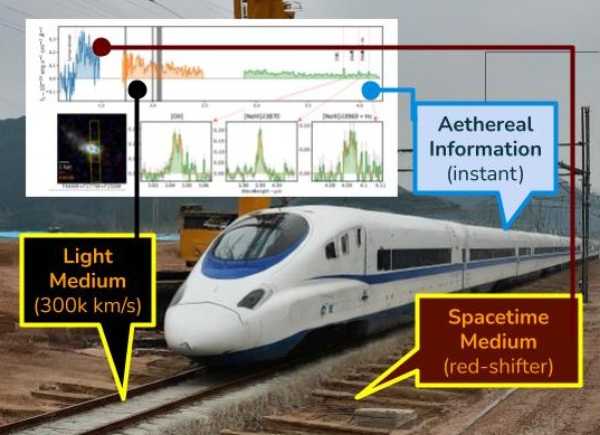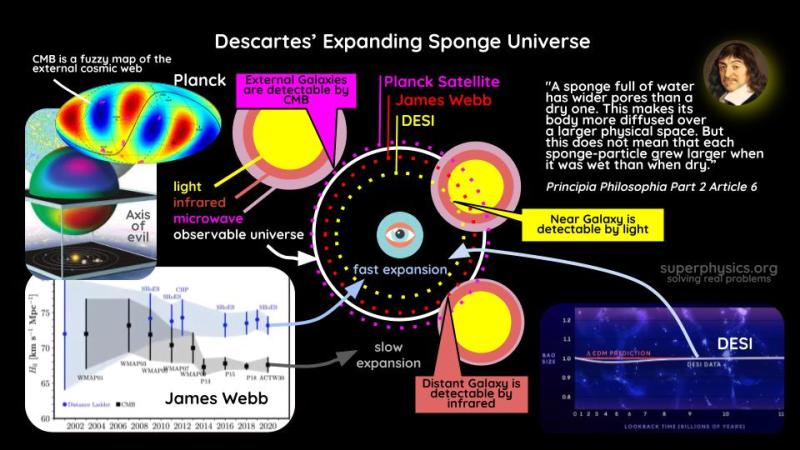The Fallacy of the Big Bang
The Big Bang is a consequence of religious thinking, from a priest named Lemaitre, that has corrupted Physics.
The Catholic religion imposes a belief that the universe had a genesis or a start date.
In reality, this start date is really the arrival of the Anunnaki who really did create humans via genetic manipulation of Homo Erectus.
Lemaitre combined the expansion of the universe and the newly discovered phenomenon of atomic decay to justify a genesis:
My hypothesis uses the theory of relativity as the cosmological constant and the cosmic repulsion which results.. The entire universe existed as an atomic nucleus which filled elliptical space of convenient radius in a uniform manner.
Georges Lemaitre
The Primeval Atom
Because of the persisting need for a start date for the universe, Lemaitre’s mind created the idea of an atom expanding to create the universe. This idea was seemingly validated after the cosmic microwave background was discovered which showed the heat of the universe matching a blackbody.
This then equated spatial distance to going back in time i.e. farther distances meant earlier universe.
This was easily debunked when James Webb found distant galaxies already formed.

For example, JWST shows galaxy “Gz9p3” having the following properties:
- a Lyman break of 9.35. This shows that it is very far (and therefore very young to modern Physics)
- MUV of −21.66. This shows that it is very bright and massive (a quality of older galaxies)
To address this anomaly, researchers advise a revision of the star formation model (e.g. speed up star formation from the early universe), instead of the more common sense solution of throwing away both ΛCDM cosmology and General Relativity. Both CDM and Relativity are Einstein monstrosities that turn Nature upside down.
The Solution: Cartesian 5 Elements
The proper solution is Rene Descartes’ 5 Elements model. This model divides the labor between the 5 Elements:
- Aether
- Air (Spacetime)
- Fire (Electromagnetism)
- Water (Weak Force)
- Earth (Strong Force)
These work together to create reality.
An analogy for the JWST findings is a bullet train on train tracks on ground.

- The ground represents spacetime
- The tracks are lightwaves that travel through spacetime
- The train is the aethereal information conveyed by those waves
- The speed of light is the rate of laying tracks.
- On good ground, the rate is 300 meters per work shift. On bad ground, it might be 100. On better ground, it might be 600.
Once the tracks have connected to both stations (star and telescope), then the bullet train travels instantly (or at least so much faster than the track-laying speed) between both ends.
In fact, Descartes extends this motion of the aether as it goes from the telescope into our eyes, brain, and lastly into the aethereal soul that experiences it.
This is why Descartes said that the speed of light was instant. He really meant the aether that travelled through light.
This means that the distant galaxies that JWST observes are close to their current age instead of being billions of years old. This explains why they are already so massive and bright. (This also explains why entangled particles can teleport instantly.)
Matches the CMB as well

The findings of the JWST matches findings of the CMB in the sense that:
- the nearer areas of the universe have a slower expansion speed. This is evidenced by heat particles from the Planck satellite.
- the farther areas of the universe have a faster expansion. This is evidenced by red shifted light particles from the James Webb Space satellite.
This is because heat particles are more limited than light particles (photons).
- The “anisotropies” are the galaxy clusters beyond the milky way
- The blackbody spectrum of the CMB is from the dark energy (evidenced by lensing) in the NEARBY universe that operates between clusters
- The CMB does not match the cosmic web because of the difference between light and heat particles.
The CMB, as a blackbody spectrum, proves that dark energy is the aetherspace which is the same in essence as the gluon field which Bob Lazar calls Gravity A waves.
All of this means that research should be put on the gluon field.
The problem is that physicists smash atoms instead of probing or interrogating them because of the wrong belief that gravity comes FROM matter instead of THROUGH it.